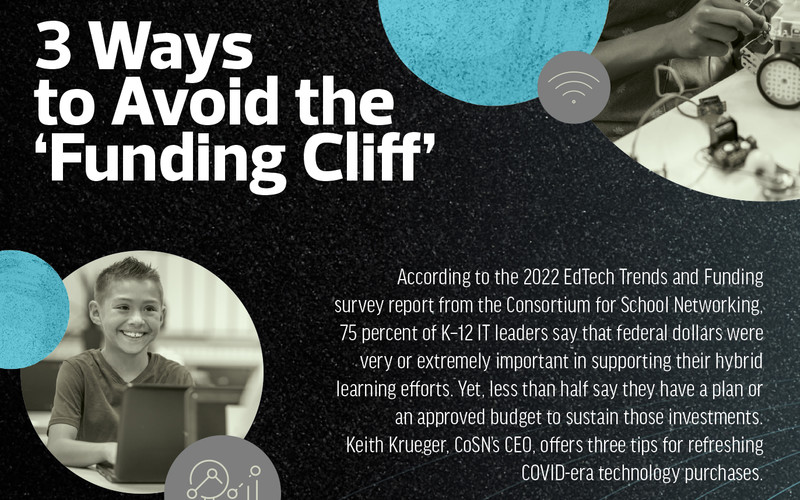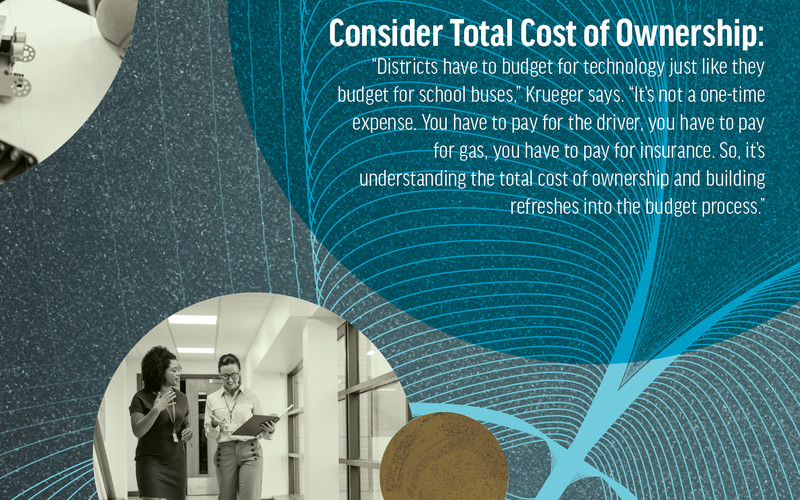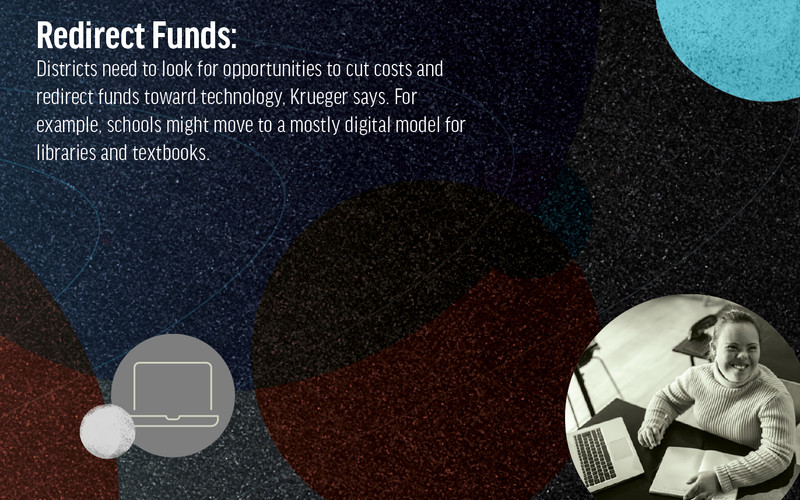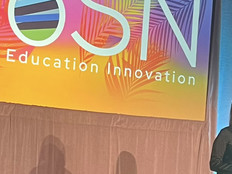Manahan: In total, we received just over $6 million. Infrastructurewise, we’ve made investments in switches, cabling, wiring and those kinds of things. We already had a sustainable plan for devices, so we were very fortunate that we did not have to spend any of the extra money there. We did purchase some data analytics capabilities to help us better understand student performance. That has allowed us to intentionally examine the data and move the needle to make sure that we are recovering and that students are moving forward.
Radcliffe: Our district received about $2.6 million. We spent part of that on 400 tablets and Chromebooks for students, devices for teachers and mobile hotspots. We also put voice amplification systems into our classrooms. That’s a big, one-time expenditure, and it would have been a really difficult project to implement without the ESSER funding.
DIG DEEPER: Use these best practices for balancing budgets with ESSER funding.
EDTECH: What impact has this funding had on students?
Zachery-Ross: Some of our ESSER funds went toward paying down the district’s debt, which was important because that debt was an impediment to us being able to attract and retain staff. We also hired mental health support staff.
The classroom audio and video upgrades were really important when we were requiring masks because it ensured that students could hear their teachers. Today, our teachers are using the equipment to record their lessons for students as well as for instructional coaching.
Bourgeois: When we thought about our ESSER funding, we considered two big drivers of student success. One is the human connection that happens between students and teachers. We know that when students feel seen and valued by their teacher as individuals, they’re more likely to stay connected to learning. So that was a primary consideration in our thinking about remote learning.
The second driver is the level of engagement that we provide through learning activities, making sure those were authentic, that they felt personal and that they were relevant.
Manahan: We spent some of the early money for extra cleaning and long-term substitute teachers. Then, in later funding rounds, we felt that was our chance to do some “moonshot” thinking about things we have always wanted to do. We set up a Montessori preschool in one of our school buildings.
We also devoted some of the funds to salary and benefits and piloted a position that we call an online safety specialist. She monitors our content filter, all day, every day, and then she meets individually with students who are either misbehaving or are being flagged for things like grief, self-harm or depression. She deals with bullying issues. It’s allowed us to be more proactive in helping our students be good digital citizens.
EDTECH: Given that these were one-time funds, how will your district sustain ESSER-funded programs?
Zachery-Ross: In 2018, voters passed a 10-year sinking fund, and we’re going to allocate some of that money to device refreshes.
Radcliffe: Knowing this funding wouldn’t be permanent, we spent time last year scaling back on what we purchased by having stakeholder groups decide what learning tools we still needed moving forward. So, we’ve already reduced the number of subscriptions for certain services.
The one-time influx of devices did throw off our replacement cycle, but we’re still planning to stagger our refresh. Some devices will need to be replaced after three years, while others can be pushed to five or even six years, depending on the device and how it is used.















